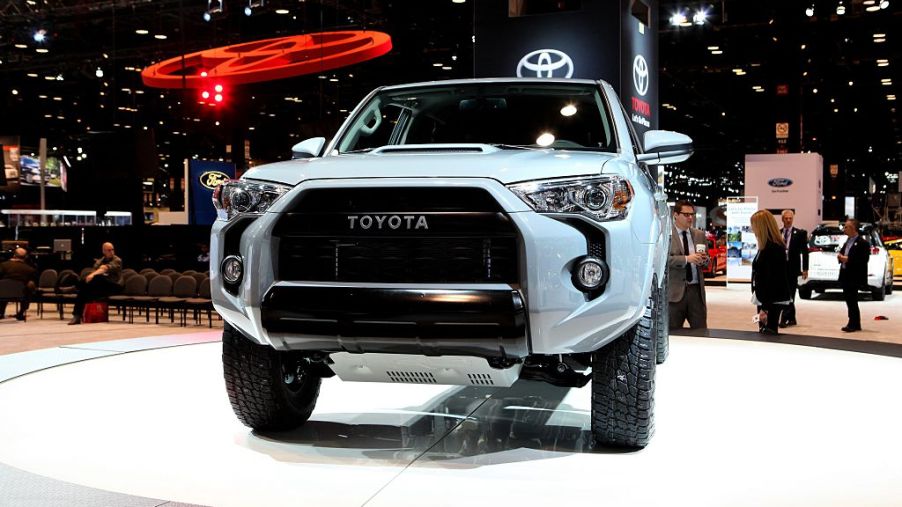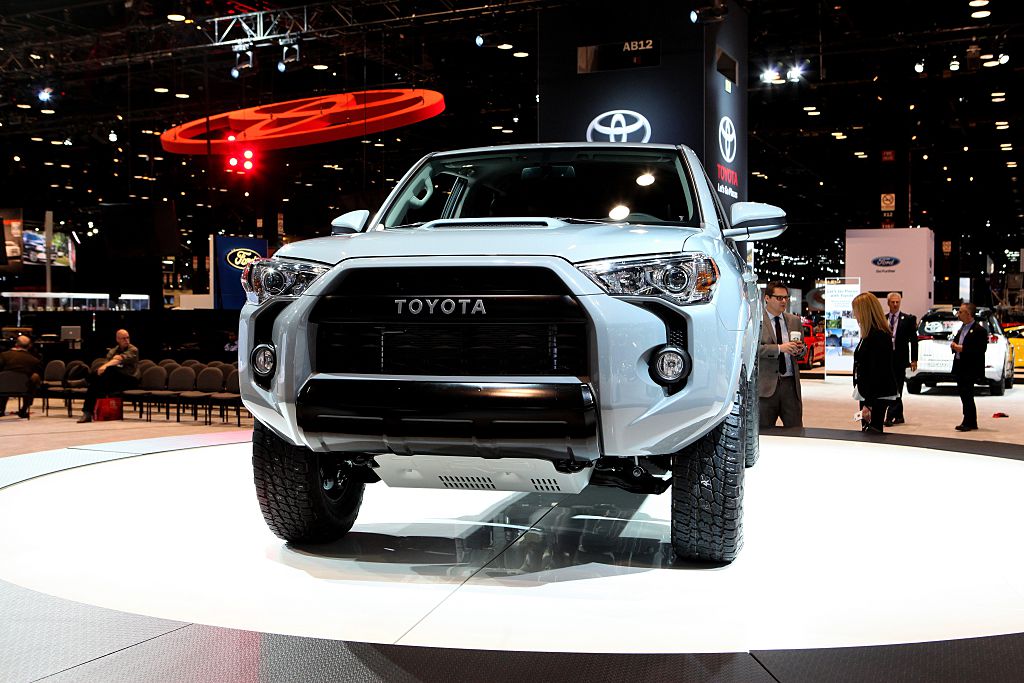
How Safe Is the Toyota 4Runner?
The 2020 Toyota 4Runner is a rugged, venerable midsize SUV that has been in production since the early ’80s. For good or for bad, this off-roader has seen relatively few major changes in recent years.
But is the Toyota 4Runner up to date on safety? The IIHS and NHTSA, two important automotive safety organizations, have weighed in with their ratings to determine how this SUV measures up.
How the Toyota 4Runner performed in IIHS testing

The IIHS tested the Toyota 4Runner for crashworthiness, crash avoidance and mitigation, and child seat anchors. It’s important to note that IIHS’s ratings apply to model years 2014 to 2020 for this vehicle.
In its frontal crash tests, the 4Runner earned an overall good rating in the IIHS’s moderate overlap front test. It simulates a frontal crash between two vehicles of similar weight at a speed close to 40 MPH.
The small overlap front test is designed to replicate when the front left corner of a vehicle collides with another vehicle or a stationary object such as a tree or a pole. In this test, IIHS gave the Toyota 4Runner a marginal rating overall for the driver’s side. The structure and safety cage received a poor rating since it failed to provide enough protection to the driver. Another problem revealed in this test was the intrusion of the door hinge pillar and instrument panel upon the driver’s leg space, increasing the risk of lower leg injuries.
On the plus side, the 4Runner earned good ratings in tests for side crashes, roof strength, and head restraints and seats. The IIHS also noted that the 4Runner does have standard daytime running lights, which helps other drivers on the road to see it.
The test results for the SUV’s halogen headlights were another story, with an overall rating of poor. They’re not curve-adaptive and have no high-beam assist. Low-beam visibility was fair on both sides of the road and inadequate on curves. The low beams’ glare was also a problem. The high beams had good visibility on both sides of the road. But they rated as fair for gradual curves and inadequate for sharp curves.
Another weak spot was the Toyota 4Runner’s child seat anchors. IIHS gave them an overall marginal rating. All three seating positions have other hardware that can be mistaken for the anchors, including the outside two with LATCH hardware. Other problems included anchors that are positioned too deep in the seat and require too much force to attach.
NHTSA ratings for the 4Runner
NHTSA tests vehicle safety and uses a rating system of one through five stars, with one being the worst and five being the best possible.
This agency tested both the two-wheel-drive and the all-wheel-drive models of the 2020 Toyota 4Runner. Both earned a four-out-of-five star rating for overall safety. NHTSA tests break down into frontal crash, side crash, and rollover.
The frontal crash simulates a head-on collision between two vehicles of similar weight, each moving at 35 MPH. The 4Runner’s overall frontal crash rating was four stars, which broke down as four stars for the front driver side and three for the front passenger side.
The 4Runner’s overall side crash rating was five stars, which reflects a combination of side barrier and pole ratings. The side barrier test recreates an intersection crash between a standing vehicle and a moving barrier at nearly 40 MPH. The pole test simulates a crash into a fixed object such as a utility pole or tree. Taken separately for the front and rear seats, the combined side barrier and pole crash tests each rated five stars.
The rollover resistance test measures the risk of rollover in a one-vehicle, loss-of-control situation. The 4Runner performed poorly in the rollover test, resulting in a three-star rating from NHTSA. The risk of rollover was 24.6%, though the SUV didn’t tip in the dynamic tip test.
Recommended safety technology is another area that NHTSA reviews. NHTSA noted that the 2020 4Runner has lane departure warning as standard. But it has no forward collision warning, no crash imminent braking, nor dynamic brake support.
However, Car and Driver reports that Toyota has added its Safety Sense P package to the new 4Runner. This suite offers several advanced driver-assistance features, including forward collision warning with autonomous braking, adaptive cruise control, and automatic high-beams. NHTSA has yet to update its report to include the new features.
The 4Runner also received no NHTSA recalls.
The final verdict plus some comparisons
The 2020 Toyota 4Runner has received satisfactory – but not top-notch –ratings from IIHS and NHTSA. Compared to last year’s model, its NHTSA ratings improved slightly thanks to the addition of a lane departure warning feature.
Newly added driver-assist features definitely help to make the 4Runner safer and so do standard safety features such as airbags and seat belts that drivers usually for granted. But its safety cage and headlights problems remain as does the more serious rollover problem that NHTSA described. The latter is particularly worrisome because it’s been an ongoing issue for the past several years.
It’s hard to understand why Toyota hasn’t yet addressed the 4Runner’s problems since it produces other SUVs that earn higher safety ratings. For example, the Toyota Highlander was awarded a 2019 Top Safety Pick designation from the IIHS and a five-star rating from the NHTSA. The Toyota RAV4 has also received a five-star rating from the NHTSA.
To answer the question: yes, the 2020 Toyota 4Runner is reasonably safe. It’s on par with its rivals like the Dodge Durango and the Chevrolet Tahoe. But if Toyota is truly committed to safety, it might consider making it as safe as other vehicles in its lineup.


